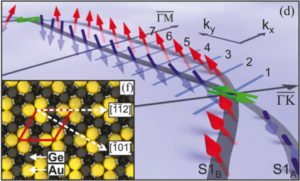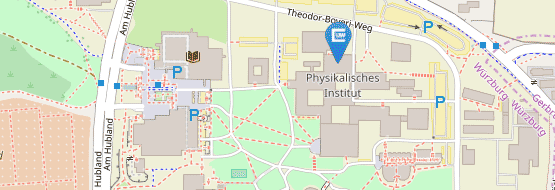P1
Correlation effects in self-organized atomic nanostructures on semiconductor surfaces

J. Schäfer and R. Claessen
This project extends the productive investigations of the first period devoted to one- and two-dimensional correlated electron systems, which are formed by self-organized epitaxial growth of metal atoms in the submonolayer regime on semiconductors surfaces. This approach exploits the tunability of the electronic properties over a wide range by variation of the atomic constituents and by doping. The role of the electron interactions is addressed experimentally by a combination of angle-resolved photoemission and scanning tunneling spectroscopy, aiming at high resolution of the spectral properties down to low temperatures. Our recent discovery of Tomonaga-Luttinger liquid behavior in atomic Au-induced chains on Ge(001) has opened a novel experimental pathway to study a wealth of quantum phenomena. The electronic spectra, characterized by a power-law behavior, will be probed locally to map the significant modifications expected in the vicinity of boundaries at chain ends or by intentional scattering centers. The effect of doping on the electron correlations can be witnessed directly, and bridging atoms between chains will serve to induce a "dimensional crossover". The rich variety of 2D electron systems with heavy adatoms (Sn, Pb, Au) in a triangular surface lattice on Si(111) and Ge(111) is used to realize Mott-Hubbard insulators intertwined with frustrated antiferromagnetic order. Different correlation regimes can be realized by changing the chemical composition or the coverage, thereby touching the fascinating competition with superconductivity in some of the systems. The signatures of electron correlation are recorded via the k-resolved spectral function, and will be related to advanced many-body calculations that include magnetic interactions. Moreover, strong spin-orbit interactions originating from the large atoms can lead to helical undulating spin textures, to be addressed by spin-resolved photoemission, which bear close resemblance to phenomena in topological insulators.

